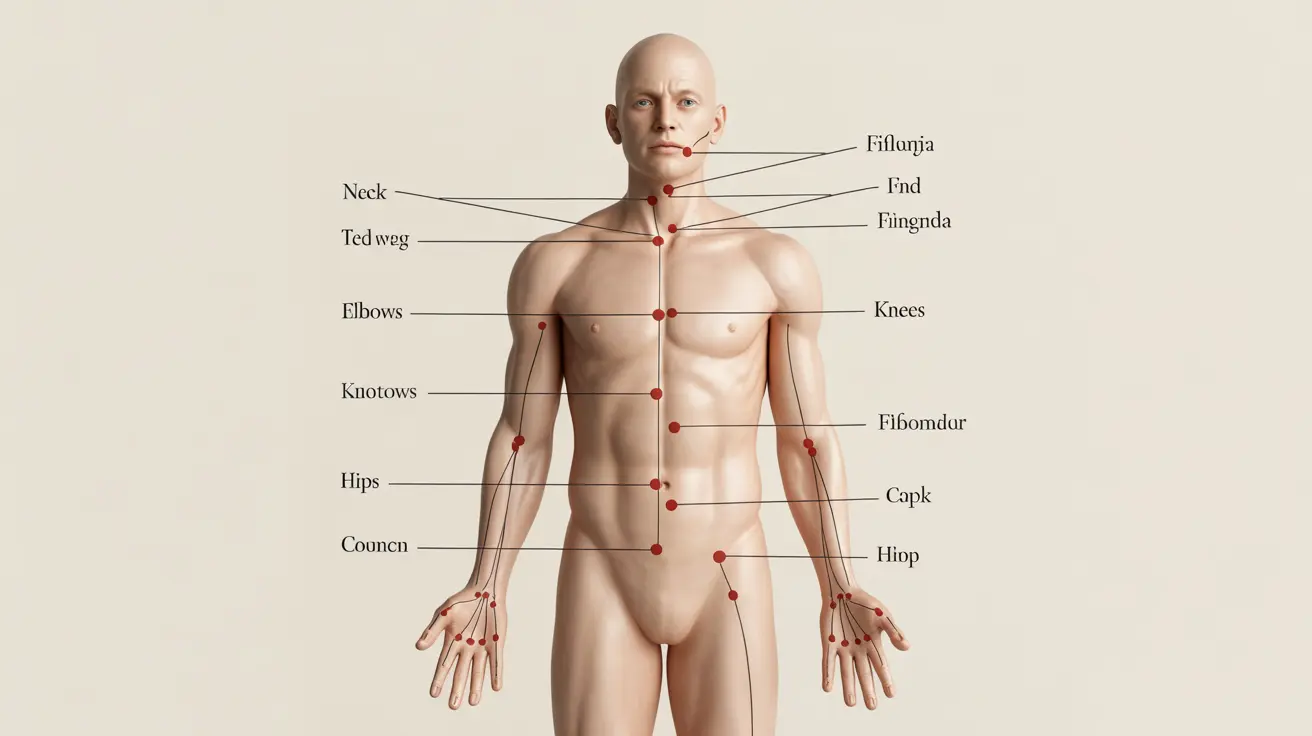Living with fibromyalgia can be challenging, especially when dealing with tender points - specific areas of the body that become extremely sensitive to touch. These tender points are a hallmark symptom of fibromyalgia and understanding them is crucial for both diagnosis and management of the condition.
In this comprehensive guide, we'll explore what fibromyalgia tender points are, how they differ from trigger points, and ways to manage the associated pain effectively.
What Are Fibromyalgia Tender Points?
Fibromyalgia tender points are specific locations on the body that become painful when pressed, even with mild pressure. Unlike general muscle pain, these points are consistently located in particular areas and are characterized by a sharp, intense pain response to touch.
These tender points are different from trigger points, which are commonly associated with myofascial pain syndrome. While trigger points can cause referred pain in other areas, tender points typically only hurt at the specific location where pressure is applied.
Common Locations of Tender Points
Fibromyalgia tender points occur in symmetrical pairs on both sides of the body. The 18 classical tender point locations include:
- Front of the neck (both sides)
- Back of the neck at the base of the skull
- Upper chest near the collarbone
- Outside of the elbows
- Inside of the knees
- Upper outer buttocks
- Between the shoulder blades
- Lower back at the hip level
- Upper hip areas
The Role of Tender Points in Diagnosis
While tender points were historically the primary diagnostic criteria for fibromyalgia, modern diagnostic approaches take a more comprehensive view. Today, healthcare providers consider multiple factors, including:
- Widespread pain lasting more than three months
- Fatigue levels
- Sleep problems
- Cognitive difficulties
- Other physical symptoms
However, understanding tender point locations remains valuable for both healthcare providers and patients in recognizing and managing fibromyalgia symptoms.
Managing Tender Point Pain
Several strategies can help manage pain associated with fibromyalgia tender points:
- Gentle exercise and stretching
- Physical therapy
- Stress reduction techniques
- Proper sleep hygiene
- Medications prescribed by healthcare providers
- Warm baths or heating pads
- Gentle massage (avoiding direct pressure on tender points)
Frequently Asked Questions
What are fibromyalgia tender points and how do they differ from trigger points?
Fibromyalgia tender points are specific locations that become painful with light pressure, while trigger points are tight muscle knots that can cause pain in other areas. Tender points don't refer pain to other locations, unlike trigger points.
Where are the common tender point locations in people with fibromyalgia?
Common tender point locations include the neck, upper chest, elbows, knees, hips, buttocks, shoulder blades, and lower back. These points occur symmetrically on both sides of the body, totaling 18 specific locations.
Can fibromyalgia be diagnosed by testing tender points alone?
No, modern diagnosis doesn't rely solely on tender points. Healthcare providers now consider multiple symptoms, including widespread pain, fatigue, sleep issues, and cognitive problems, for a more comprehensive diagnosis.
Why do fibromyalgia tender points cause pain with light pressure?
Fibromyalgia tender points are painful due to central sensitization, where the nervous system becomes more sensitive to pain signals. This causes normally non-painful pressure to be interpreted as painful by the brain.
How can identifying tender points help manage fibromyalgia symptoms effectively?
Understanding tender point locations helps patients and healthcare providers track symptom patterns, avoid aggravating sensitive areas, and develop targeted treatment strategies. This knowledge can lead to more effective pain management and improved quality of life.




